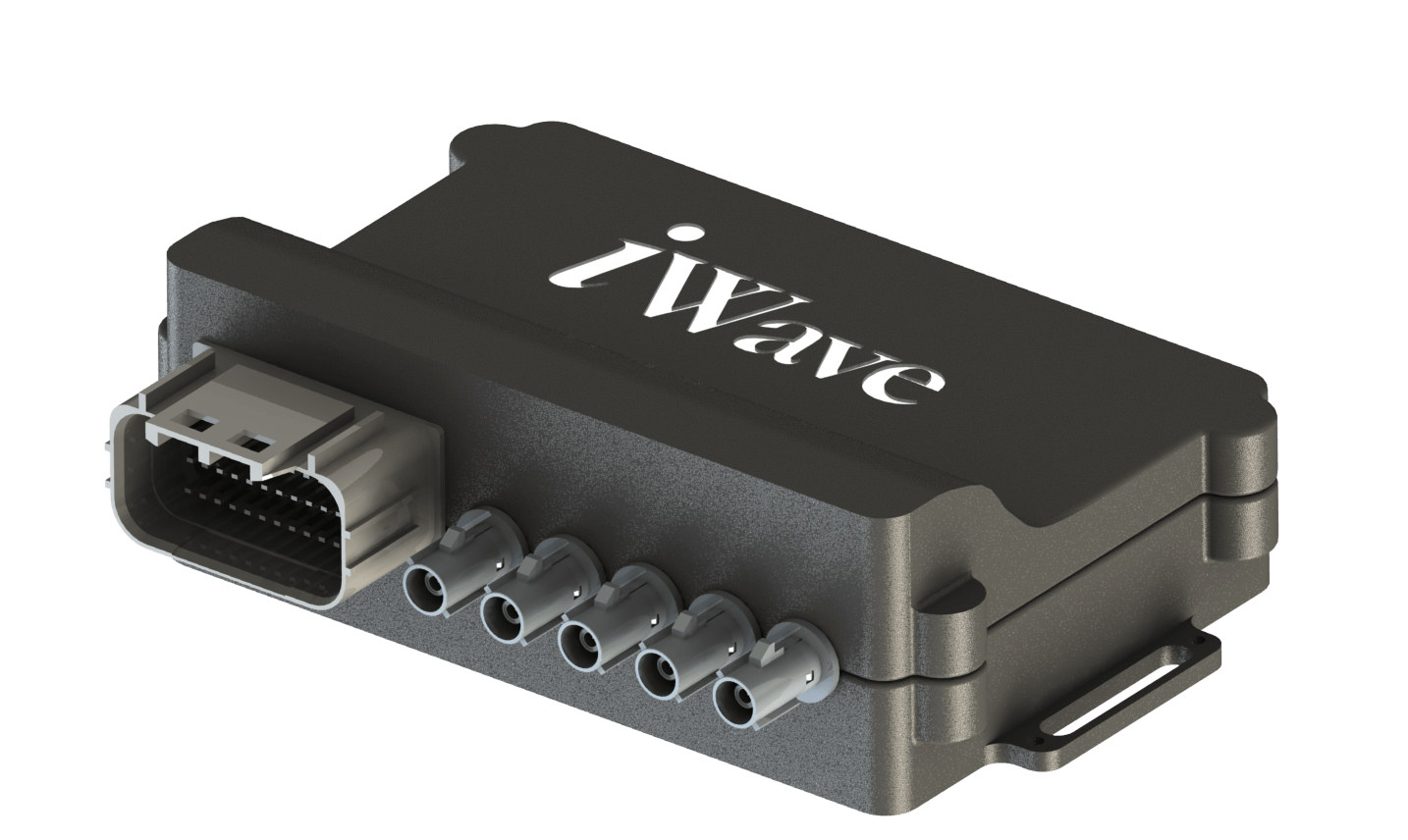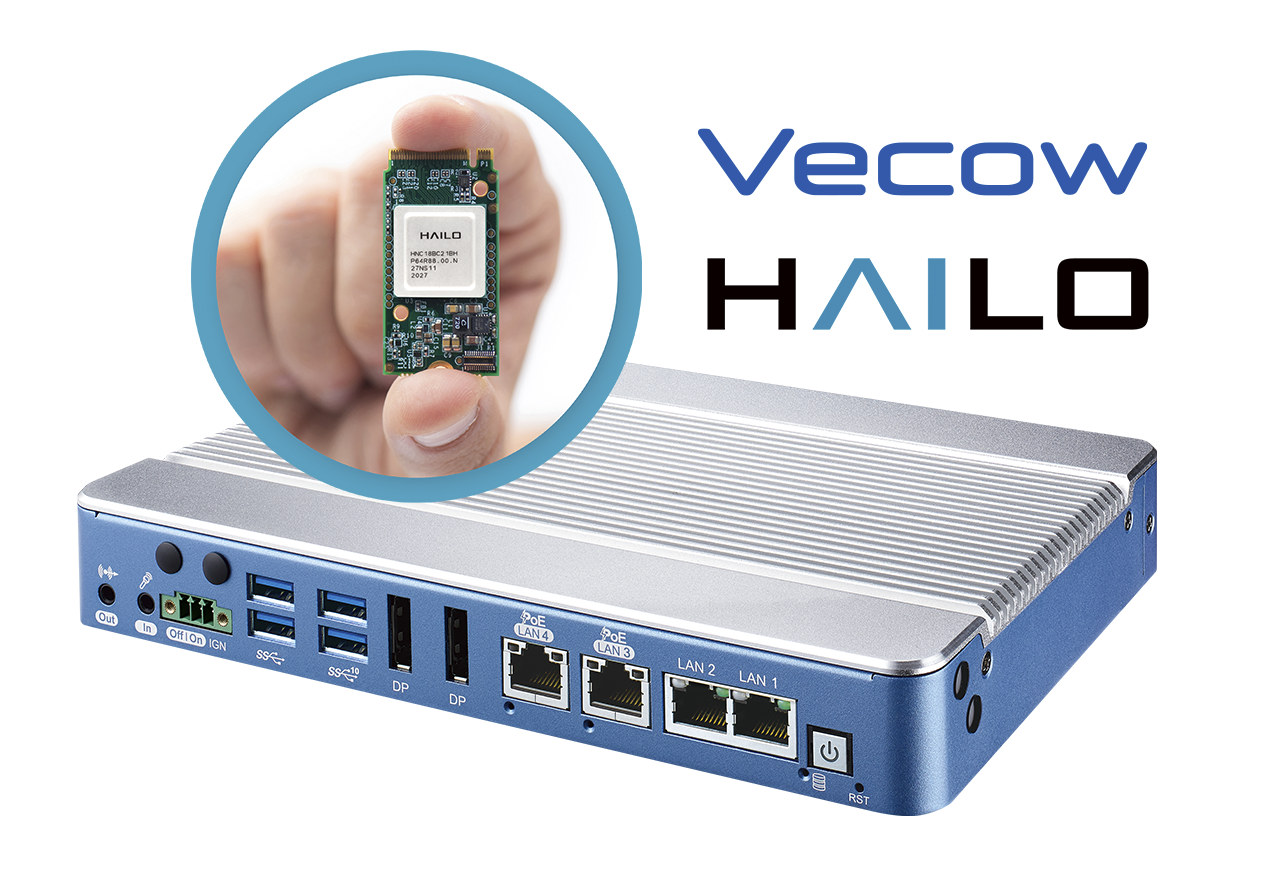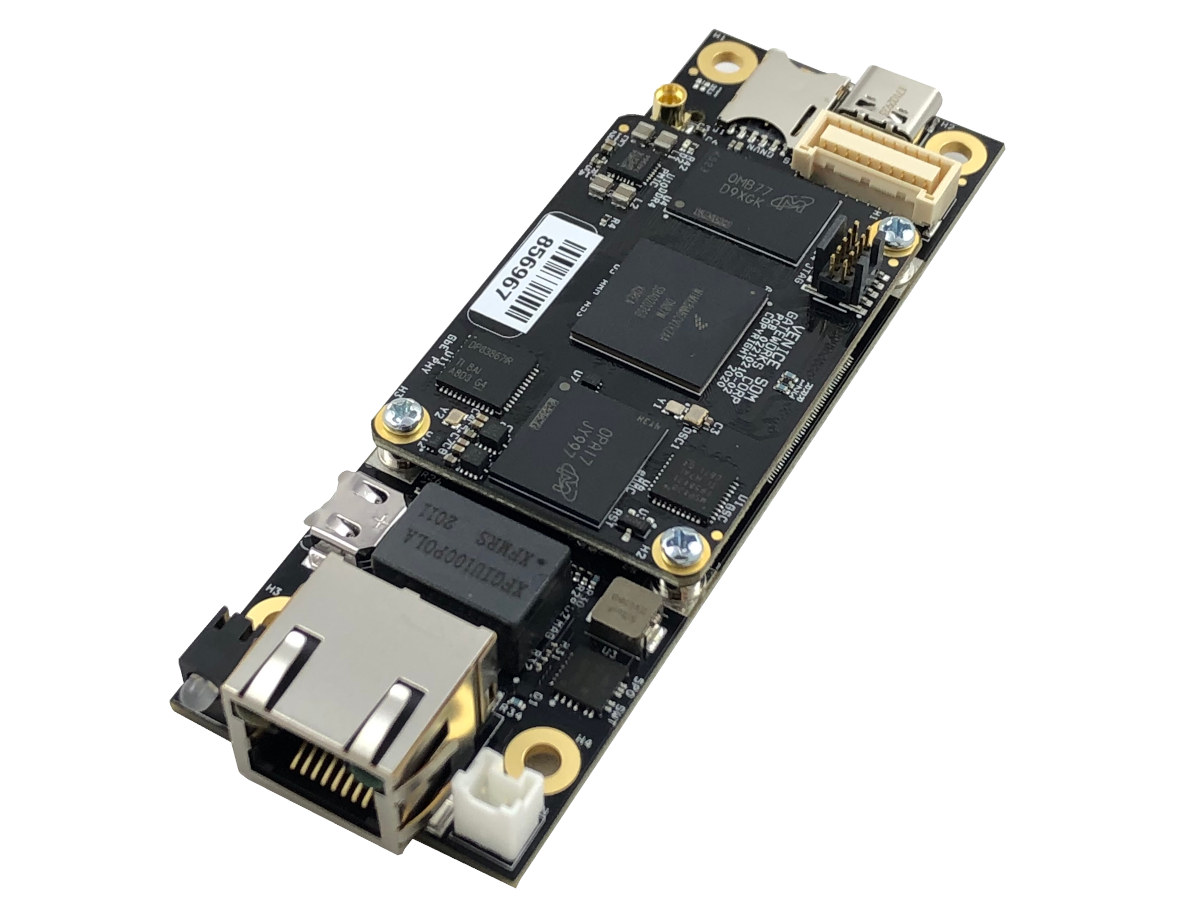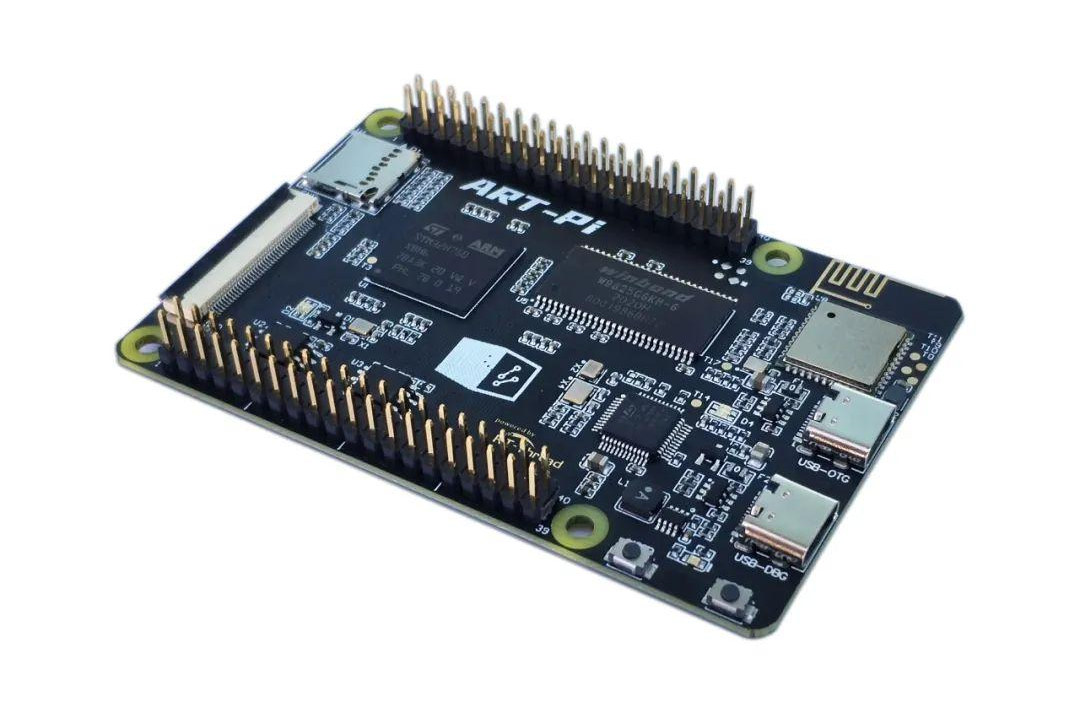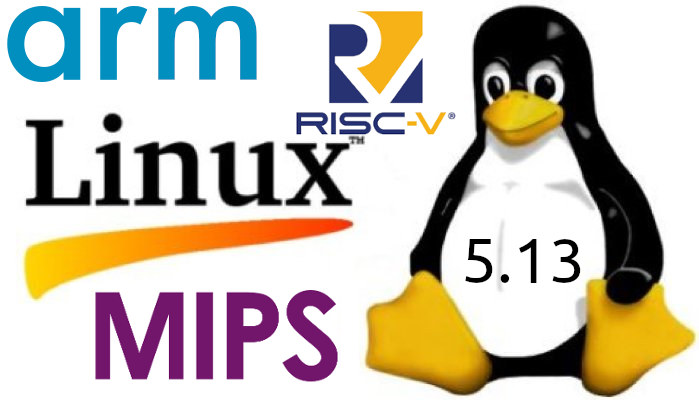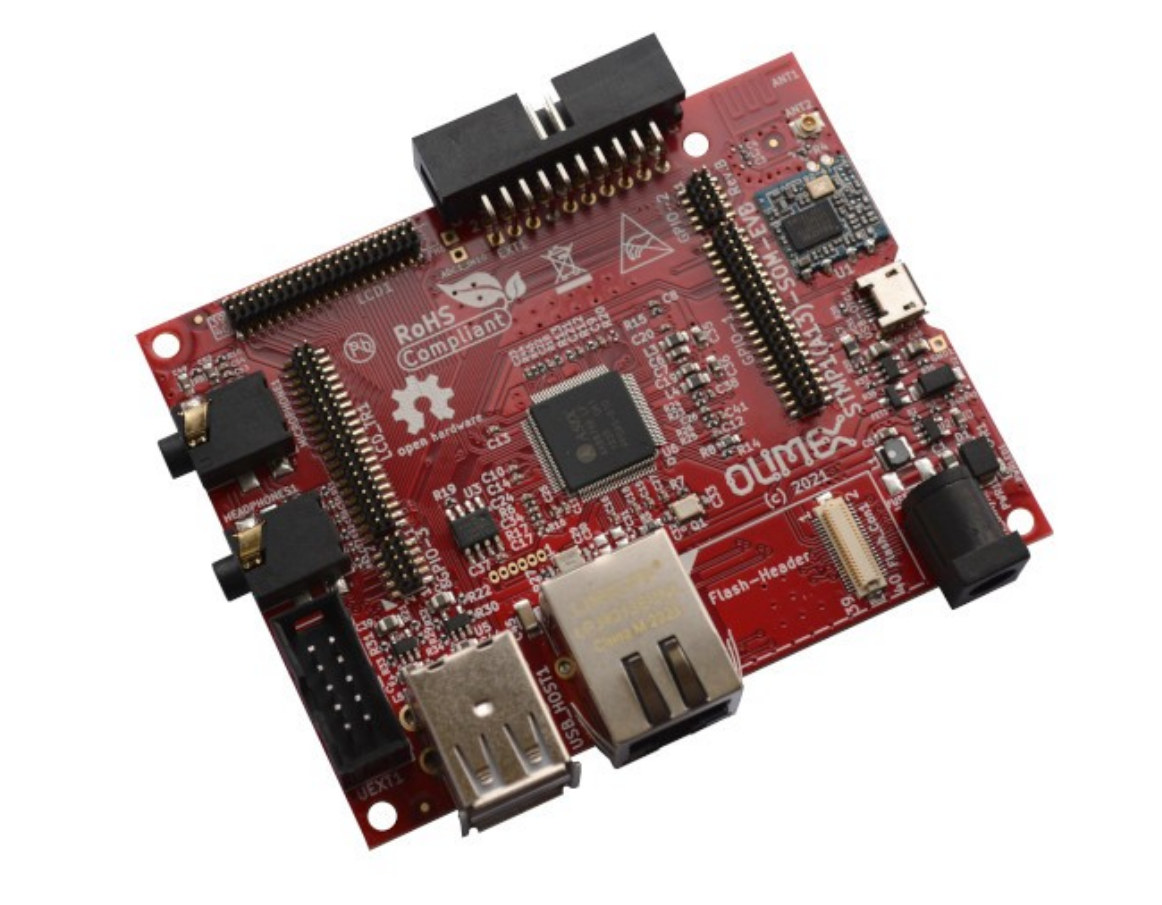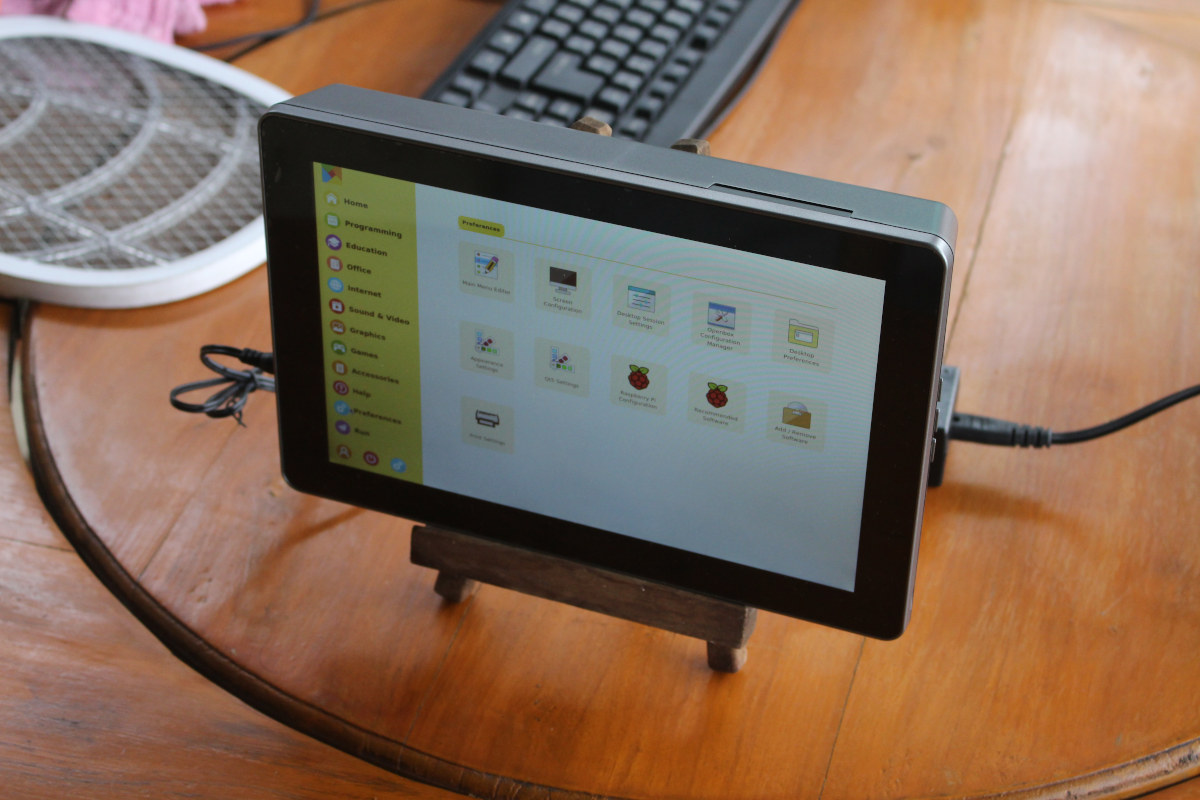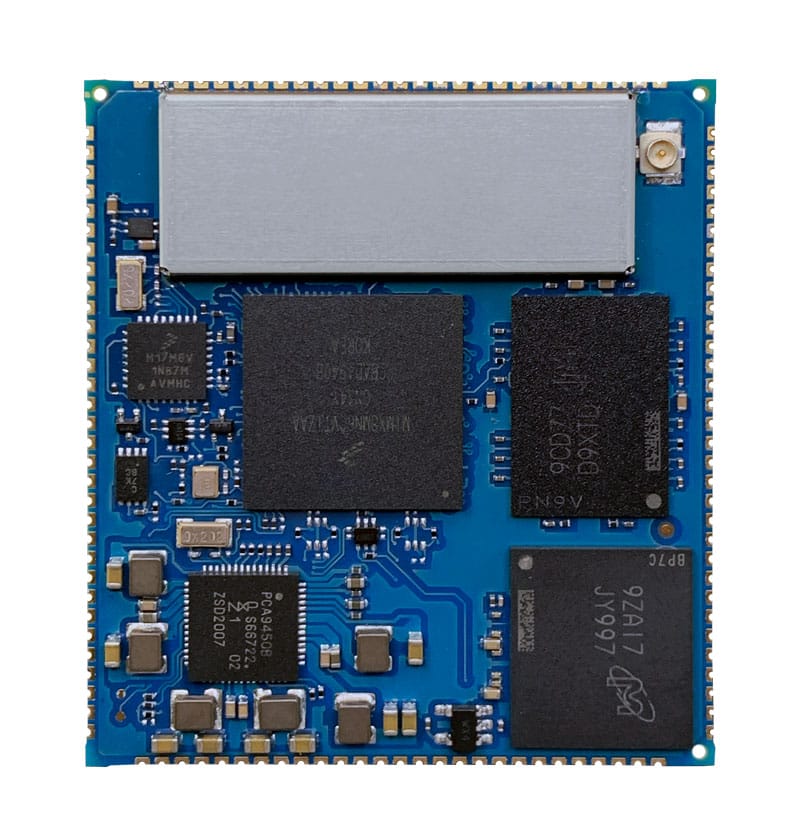iWave Systems already provided some Linux-based vehicle diagnostic systems such as their NXP i.MX 7 powered OBD-II dongle with 4G LTE and GPS. But their latest model, the iW-Rainbow-G41 telematics gateway, goes a step further with an NXP i.MX 8 processor controlling four CAN Bus interfaces, and offering both wired (RS232/RS485, automotive Ethernet) and wireless (cellular, Wifi, Bluetooth) connectivity options. iW-Rainbow-G41 telematics gateway specifications: SoC – NXP i.MX 8 “DXL” Arm processor (Not sure what DXL is exactly, and iWave has yet to reply to our request for more information, but NXP shortly mentions i.MX 8X/XL processors in a page about V2X applications) System Memory – 1GB LPDDR4 (Upgradable up to 2GB) Storage – 8GB eMMC flash (Upgradable up to 64GB) Communication Interfaces Cellular – 4G LTE Cat 4, LTE Cat M1/NB1, option to upgrade to 5G; E-Call support 802.11 a/b/g/n/ac WiFi 5 with optional support for 802.11ax WiFi 6 […]
Vecow ABP-3000 AI Edge gateway combines Hailo-8 AI accelerator with Intel Whiskey Lake processor
We first discovered Hailo-8 AI accelerator with claims of up to 26 TOPS performance and 3TOPS/W efficiency in October 2020. Since then, we’ve seen several integrate an Hailo-8 M.2 module into their design including EdgeTuring Edge AI camera and Vecow VAC-1000 gateway with a 24-core Foxconn processor. Vecow has now integrated the Hailo-8 AI accelerator into another gateway, but instead of relying on an Arm processor, the Vecow ABP-3000 AI computing system features an 8th generation Intel Core Whiskey Lake processor. Vecow ABP-3000 specifications: SoC – Intel Core i7-8665UE or i3-8145UE quad-core Whiskey Lake processor with Intel UHD Graphics 620; 15W TDP System Memory – 2x DDR4 2400MHz SO-DIMM, up to 64GB Storage – 1x M.2 Key B Socket (PCIe x2/SATA) AI Accelerator – Hailo-8 AI Processor, up to 26 TOPS with TensorFlow, ONNX frameworks support System IO chip – IT8786E Video Output – 2x DisplayPort up to 4096 x […]
Venice GW7100 compact industrial SBC packs one Gigabit Ethernet port, one mPCIe socket
Gateworks introduced the new Venice Industrial IoT SBC Family based on NXP i.MX 8M Mini processor with up to two Ethernet ports and four mPCIe Sockets last September starting with GW7300 board with dual Gigabit Ethernet and three mPCIe sockets. But the US company has now announced the availability of the smallest member of the family with Venice GW7100 SBC equipped with just one Gigabit Ethernet port and one mPCIe socket in a compact 100x35mm form factor. Venice GW7100 specifications: SoC – NXP i.MX 8M Mini single, dual or quad-core Arm Cortex-A53 processor @ up to 1.6GHz, with Arm Cortex-M4 at 400+MHz, 3D GPU (OpenGL ES 2.0), 2D GPU, and 1080p VPU System Memory – 1 GB LPDDR4 (up to 4GB) Storage – 8 GB eMMC flash (up to 64GB) Connectivity 1x Gigabit Ethernet RJ45 port with passive PoE support WiFi/Bluetooth or Cellular connectivity via mini PCIe socket and Nano-SIM […]
Art-Pi STM32H750 Cortex-M7 board supports RT-Thread, mainline Linux
I like to browse Linux changelog to learning about new features in the kernel, but also new hardware that made it into mainline Linux, even if only preliminary or partial. And in the just-released Linux 5.13, one board that caught my eye was Art-Pi, powered by an STMicro STM32H750 Cortex-M7 microcontroller without MMU (memory management unit) that was initially designed for RT-Thread real-time operating system. Art-Pi specifications: MCU – STM32H750XBH6 Value Line Cortex-M7 microcontroller @ 400 MHz, with 128KB flash, 16KB D/I cache, 864 SRAM, 64KB+128KB TCM with ECC correction System Memory – 32MB SDRAM Storage – MicroSD card slot, 16 MB SPI flash, 8MB QSPI flash Display – FPC connector for RGB888 displays Connectivity – SDIO WiFi 4 and UART Bluetooth via Ampak AP6212 module USB – 1x USB OTG Type-C port Debugging – On-board ST-LINK/V2.1 via USB-C DBG port Expansion – 2x 40-pin P1 & P2 headers with […]
Linux 5.13 Release – Notable changes, Arm, MIPS and RISC-V architectures
Linus Torvalds has just announced the release of Linux 5.13: So we had quite the calm week since rc7, and I see no reason to delay 5.13. The shortlog for the week is tiny, with just 88 non-merge commits (and a few of those are just reverts). It’s a fairly random mix of fixes, and being so small I’d just suggest people scan the appended shortlog for what happened. Of course, if the last week was small and calm, 5.13 overall is actually fairly large. In fact, it’s one of the bigger 5.x releases, with over 16k commits (over 17k if you count merges), from over 2k developers. But it’s a “big all over” kind of thing, not something particular that stands out as particularly unusual. Some of the extra size might just be because 5.12 had that extra rc week. And with 5.13 out the door, that obviously means […]
Olimex STM32MP1 SoM and evaluation board support Linux 5.10
Olimex has just announced the availability of an STMicro STM32MP1 Cortex-A7/M4 powered system-on-module (SoM) and an evaluator board with respectively STMP15X-SOM available in extended and industrial temperature variants, as well as STMP1(A13)-EVB evaluation board that works with the new STM32MP1 module, as well as earlier A13-SOM Allwinner A13 based system-on-module. Beyond the hardware, the company told us their upcoming STMP1-OLinuXino-LIME2 SBC could support mainline Linux in February, and the company prepared some Linux 5.10 based Debian Buster and Ubuntu Focal images which are now also available for the STMP15X-SOM module. STMP15X-SOM system-on-module Specifications: SoC – STMicro STM32MP151/153/157 dual-core Cortex-A7 @ 650 to 800MHz and Arn Cortex-M4 real-time core @ 209 MHz System Memory – 256 or 512 MB DDR3L Storage – MicroSD card socket Audio – On-module audio codec Board-to-board connectors GPIO-1 40-pin connector with 39 GPIOs, 3x UARTs, 1x QuadSPI, 2x I2C, 2x eMMC GPIO-2 10-pin connector with USB […]
RasPad 3 Review – Part 2: A Raspberry Pi 4 mini PC with integrated display
I started RasPad 3 review last week with an unboxing of the tablet shell for Raspberry Pi 4, together with assembly instructions, and a first boot after flashing Raspad OS to the system. In the first part of the review, I mentioned that I’d probably focus the remainder of the review on Ezblock Studio visual programming IDE, as the rest of the software is almost the same as using a standard Raspberry Pi 4, the other difference being the touchscreen-friendly RasPad launcher. But Sunfounder explained to me it would be hard to check out Ezblock as it’s designed to control robots and other hardware platforms, and requires an extra HAT (see Kickstarter campaign) to allow the Ezblock APP to connect through Bluetooth (it cannot be directly linked to Raspberry Pi through the built-in Bluetooth). Here’s an example of a robot that is compatible with Ezblock Studio: Picar-X. Finally, I was […]
Digi ConnectCore 8M Mini SOM and Mini Development Kit for Industrial IoT Applications
Digi International has announced the Digi ConnectCore 8M Mini System-on-Module (SOM) which is an addition to its ConnectCore family modules. We saw the Android application development kit featuring earlier Digi Wireless modules based Freescale i.MX51 (ConnectCore Wi-i.MX51) and i.MX53 (ConnectCore Wi-i.MX53) in early 2012. The new Digi ConnectCore 8M Mini comes with a built-in Video Processing Unit specialising in vision use cases. The Digi ConnectCore 8M Mini SOM is an industrial i.MX 8M Mini quad-core system-on-module that comes with Arm Cortex-A53 cores, one Cortex-M4 core, and the Cortex-M0-based Digi Microcontroller Assist. This enables optimal power consumption while simultaneous maintenance of highly efficient performance. Main benefits of Digi Connect Core 8M Mini SOM Digi SMTplus form factor (40 x 45 mm) for flexibility and reliability while designing. Power management with both hardware and software support for low-power designs. Display and camera capabilities with graphics and video hardware acceleration make it suitable […]


